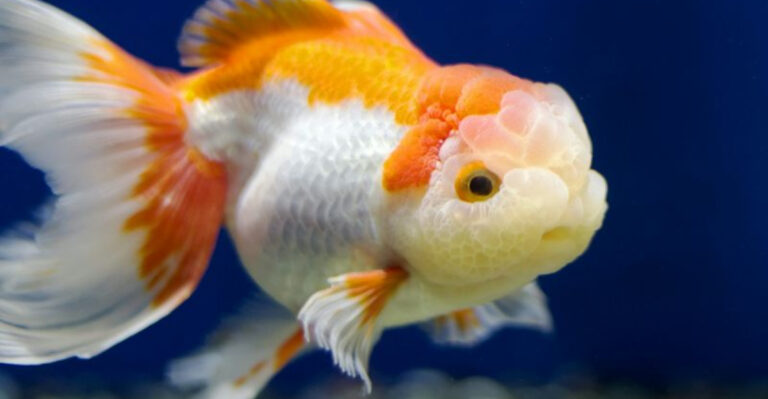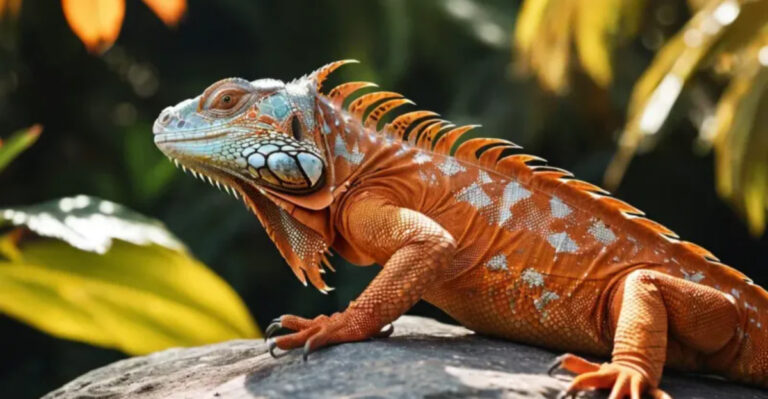10 Venomous Jellyfish You Never Want To Meet (And 5 That Are Simply Gorgeous)
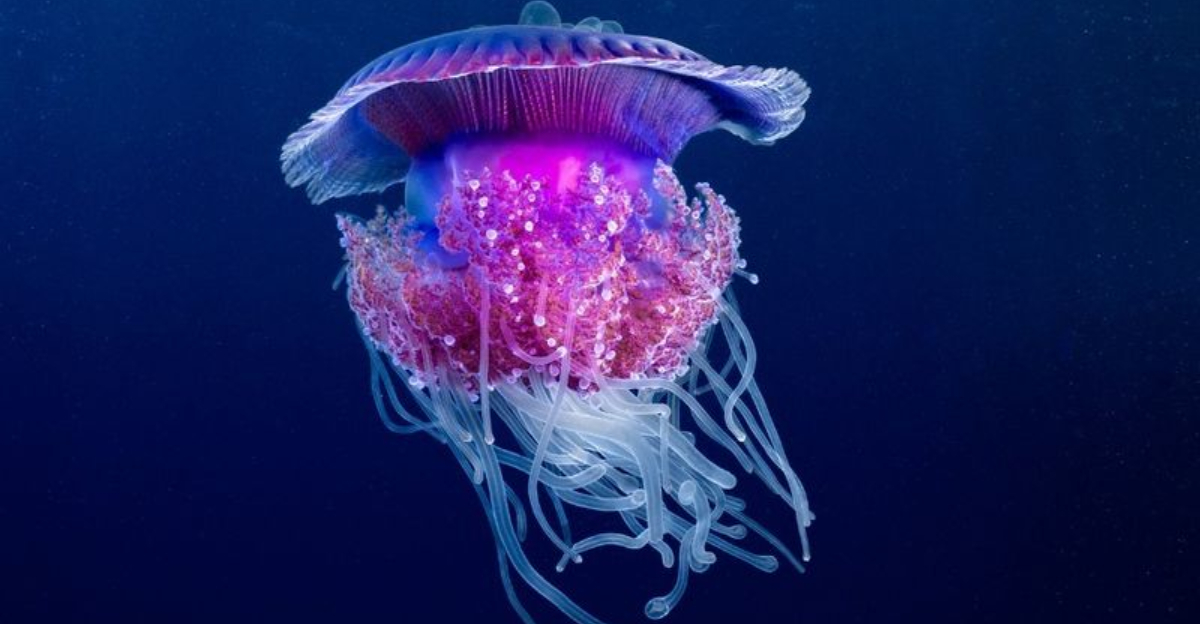
The ocean’s silent drifters, jellyfish have existed for over 650 million years, predating dinosaurs and surviving mass extinctions.
While most are harmless, some pack a deadly punch that can kill humans in minutes. Others captivate with their ethereal beauty, glowing like living light shows beneath the waves. Here’s a look at the most dangerous and most stunning jellyfish you might encounter in our oceans.
1. Box Jellyfish: The Silent Assassin
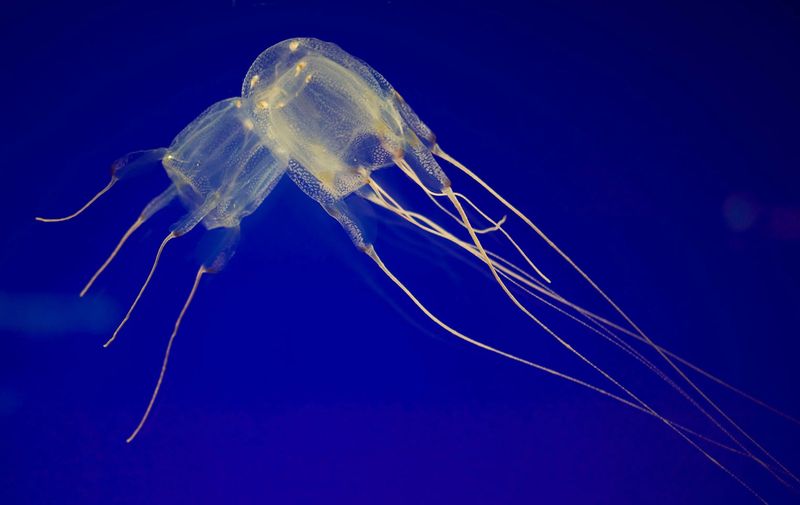
Australia’s most lethal marine creature can end a human life in just 2-5 minutes. Its venom targets the heart, nervous system, and skin cells simultaneously.
Each tentacle contains enough venom to kill 60 adults. What makes them extra dangerous? They’re nearly invisible in water and can swim at speeds up to 4 mph, actively hunting their prey rather than just drifting.
2. Irukandji: Tiny Terror With A Mighty Punch
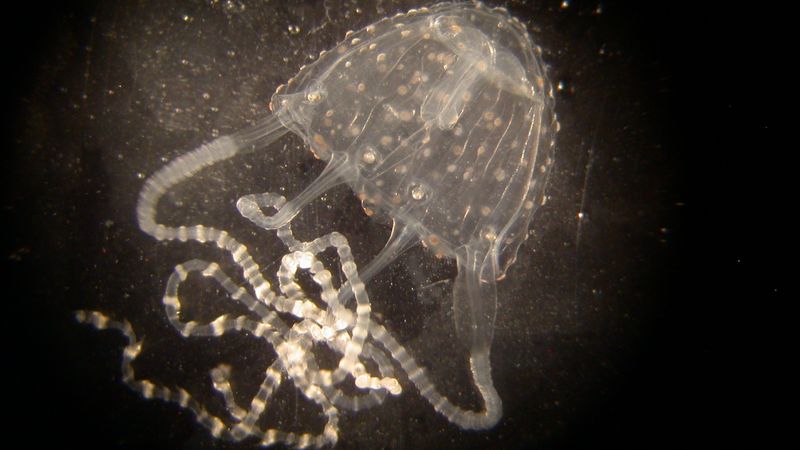
No bigger than your thumbnail, this miniature monster packs one of nature’s most potent venoms. The initial sting feels like little more than a mosquito bite.
Then comes Irukandji syndrome: excruciating pain, vomiting, sweating, and a feeling of impending doom so severe that victims have begged doctors to let them die. Found primarily in Australian waters, they’re gradually expanding their territory due to warming oceans.
3. Portuguese Man O’ War: The Beautiful Impostor
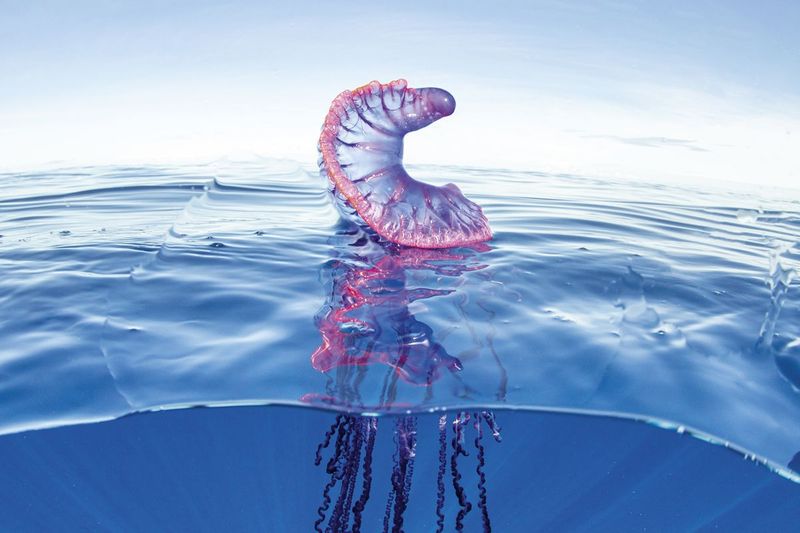
With its stunning blue-purple float and long tentacles, this creature looks like an alien spacecraft. Surprise fact: it’s not actually a jellyfish but a colony of specialized organisms working together!
Its tentacles can stretch 100 feet and contain enough neurotoxin to paralyze small fish and cause excruciating pain to humans. Even dead specimens washed ashore can deliver painful stings for weeks after death.
4. Lion’s Mane: The Ocean’s Flowing Mane
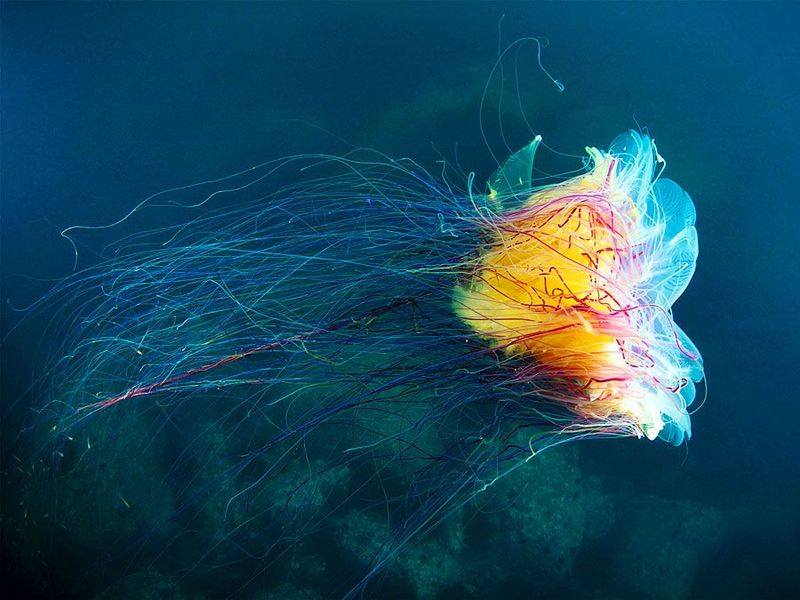
The world’s largest jellyfish sports tentacles that can reach 120 feet—longer than a blue whale! Its bell diameter can exceed eight feet, creating a spectacular but dangerous display in cold northern waters.
While rarely fatal, its sting causes intense burning pain and red welts. Featured in a Sherlock Holmes mystery, this Arctic giant has been known to entangle swimmers in its massive tentacle array like a floating web.
5. Sea Nettle: The Floating Fire
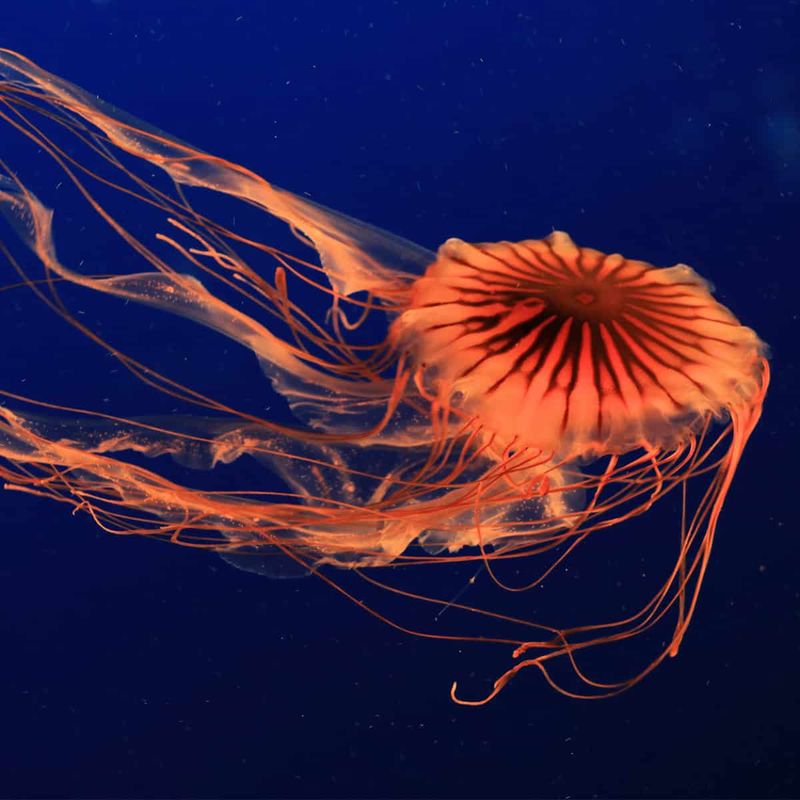
Amber-colored and hauntingly beautiful, sea nettles dominate Chesapeake Bay each summer. Their bell can grow to 12 inches with stinging tentacles stretching 20 feet.
Brushing against one feels like being stung by dozens of bees simultaneously. They’ve adapted to thrive in oxygen-depleted zones, allowing them to flourish where other marine life struggles. Their population explosion in recent years is linked to climate change and water pollution.
6. Morbakka: The Unassuming Lethality
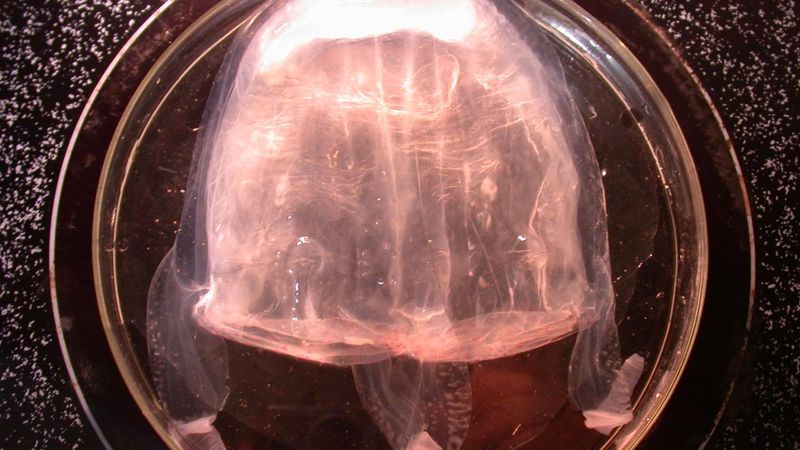
Lurking in Queensland waters, this jellyfish resembles a translucent boxing glove. Its mild initial sting often leads victims to dismiss it—a potentially fatal mistake.
Within 20 minutes, severe lower back pain signals the beginning of systemic collapse. Blood pressure skyrockets while heart rate plummets. Unlike its box jellyfish cousins, Morbakka doesn’t leave tell-tale whip marks on skin, making diagnosis challenging for medical professionals.
7. Bluebottle: The Beach Party Crasher
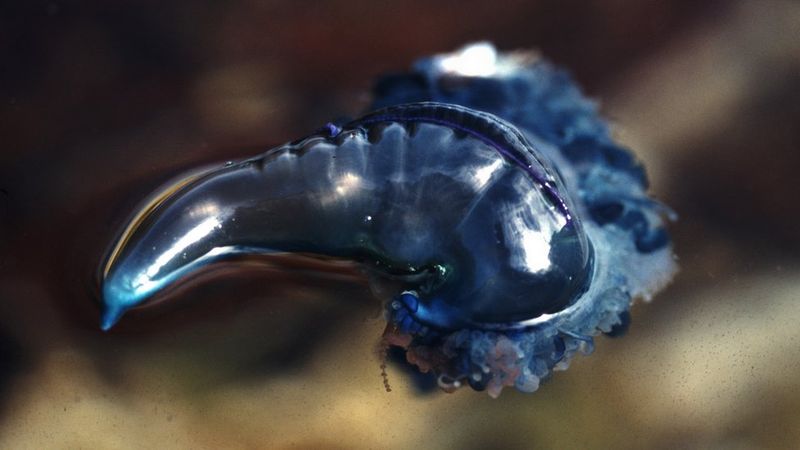
Every Australian beach-goer knows the dreaded sight of these blue bubbles washing ashore. Their electric-blue float acts like a sail, propelling them across ocean surfaces at the mercy of winds.
A single tentacle can whip across exposed skin, leaving raised welts that burn for hours. Though smaller than their Portuguese Man O’ War cousins, bluebottles cause thousands of stings annually, closing popular beaches during summer months when strong onshore winds bring armadas of them to shorelines.
8. Hawaiian Box Jellyfish: The Predictable Menace
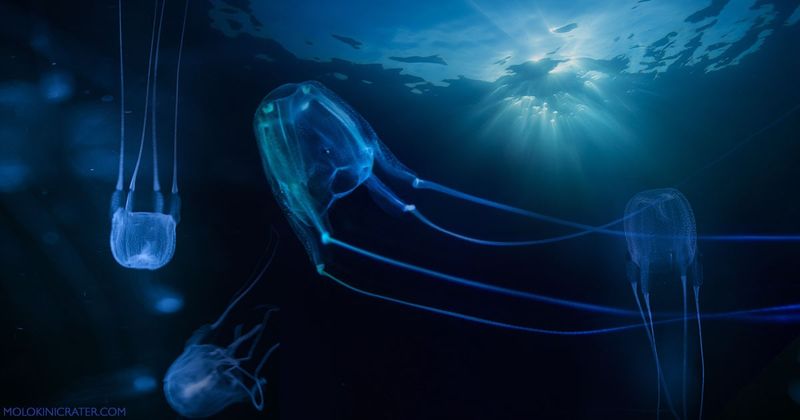
Unlike most jellyfish, these venomous creatures follow a monthly schedule tied to moon phases. Hawaiian beaches post warning signs 8-10 days after each full moon when these jellies arrive to spawn.
Their venom causes Irukandji-like symptoms including shooting pain, respiratory distress, and cardiac problems. What makes them unique is their four distinct eyes with retinas, lenses, and corneas that allow them to actively hunt rather than randomly drift into prey.
9. Mauve Stinger: The Glowing Nightmare
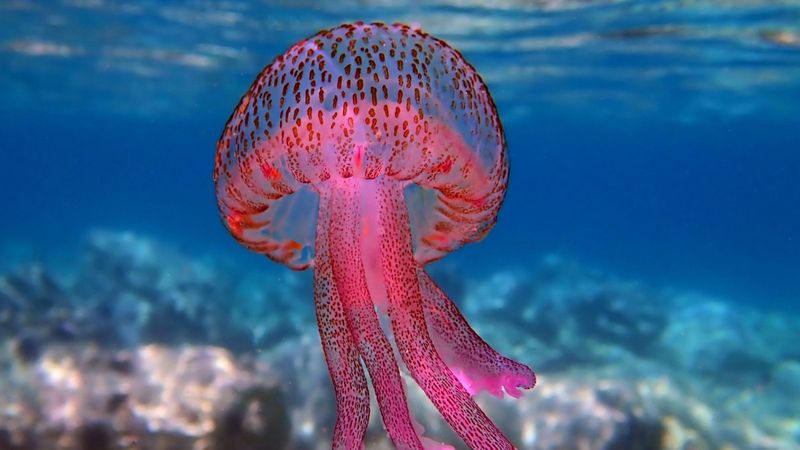
By day, this jellyfish appears an innocent pinkish-purple. By night, it transforms into a bioluminescent phantom, glowing electric blue when disturbed—a warning too late for most swimmers.
Its sting causes burning pain, raised welts, and potential respiratory issues. Found worldwide in warm waters, these jellies sometimes gather in swarms so dense they’ve shut down power plants by clogging cooling water intakes and devastated fish farms by stinging entire stocks to death.
10. Nomura’s Jellyfish: The Giant Invader
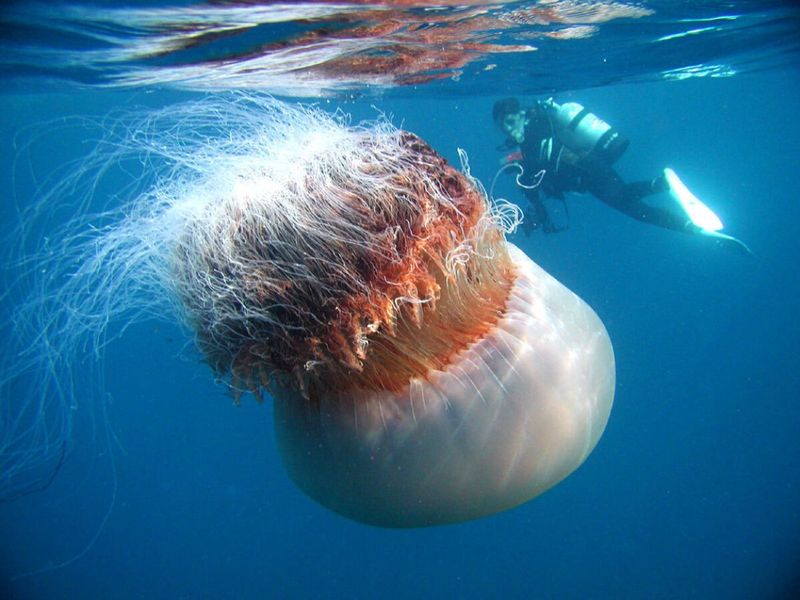
Imagine encountering a jellyfish the size of a refrigerator! These massive creatures can weigh up to 440 pounds with bells spanning 6.5 feet across.
Though not deadly to humans, their size makes encounters potentially life-threatening—swimmers can become entangled and drown. In recent years, explosive population blooms have capsized fishing boats in Japan and caused millions in damage to fishing industries when nets break under their collective weight.
11. Crystal Jellyfish: Nature’s Living Lightbulb
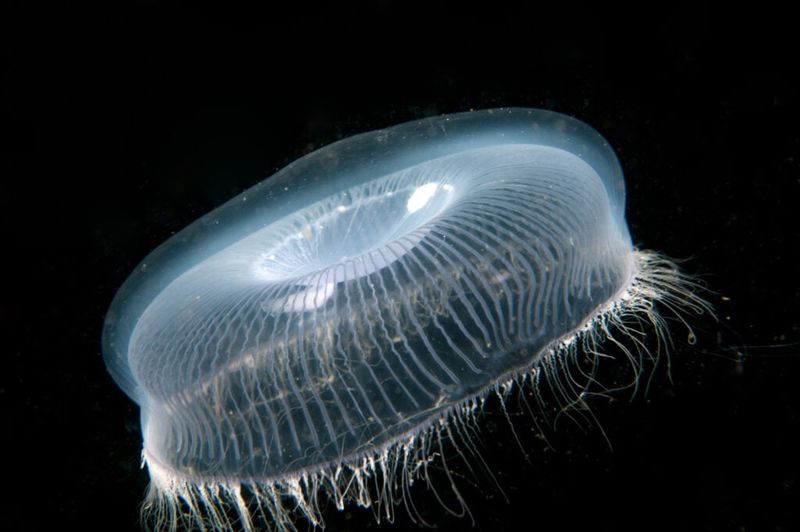
Nearly invisible by day, this ethereal beauty transforms into a cosmic light show at night. Its transparent tissues appear like blown glass, hiding the secret that revolutionized medical science.
Scientists extracted green fluorescent protein from these jellies, creating a biological marker that tracks cancer cells and neural activity. This discovery earned a Nobel Prize in 2008! Though they do sting, their venom is mild to humans—their true power lies in their contribution to medicine.
12. Atolla Jellyfish: The Deep Sea Disco Ball
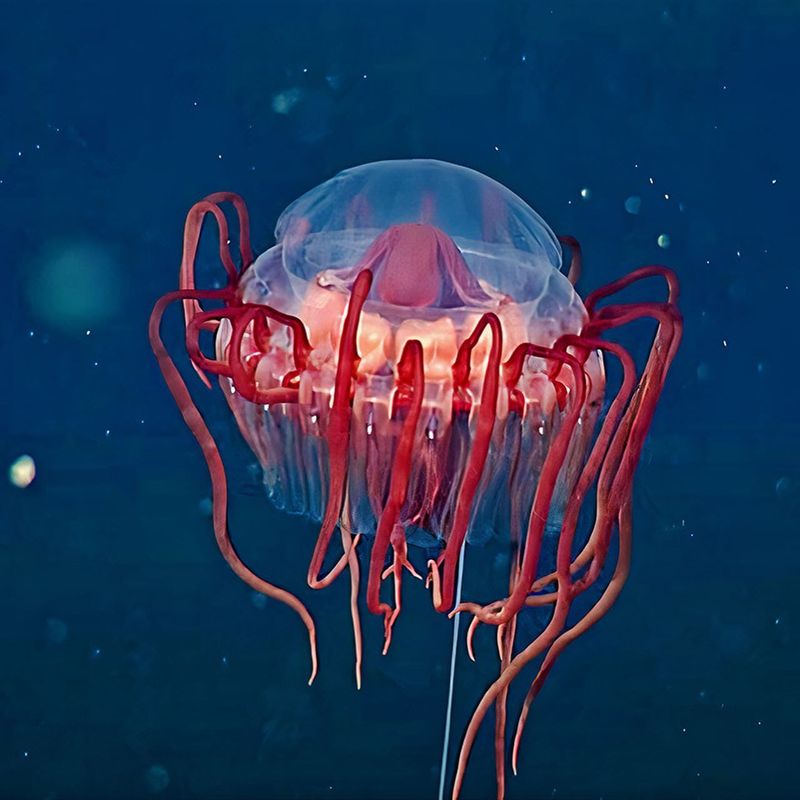
Dwelling in the ocean’s midnight zone, this crimson beauty creates one of the most spectacular light shows on Earth. When threatened, it produces circular waves of blue bioluminescence—aptly nicknamed the “alarm jellyfish.”
This hypnotic display serves as a “burglar alarm,” attracting larger predators to eat whatever is attacking the jellyfish. Living at depths of 3,000 feet where sunlight never reaches, these jellies can be up to 4 inches wide with one tentacle significantly longer than the others.
13. Upside-Down Jellyfish: The Living Garden
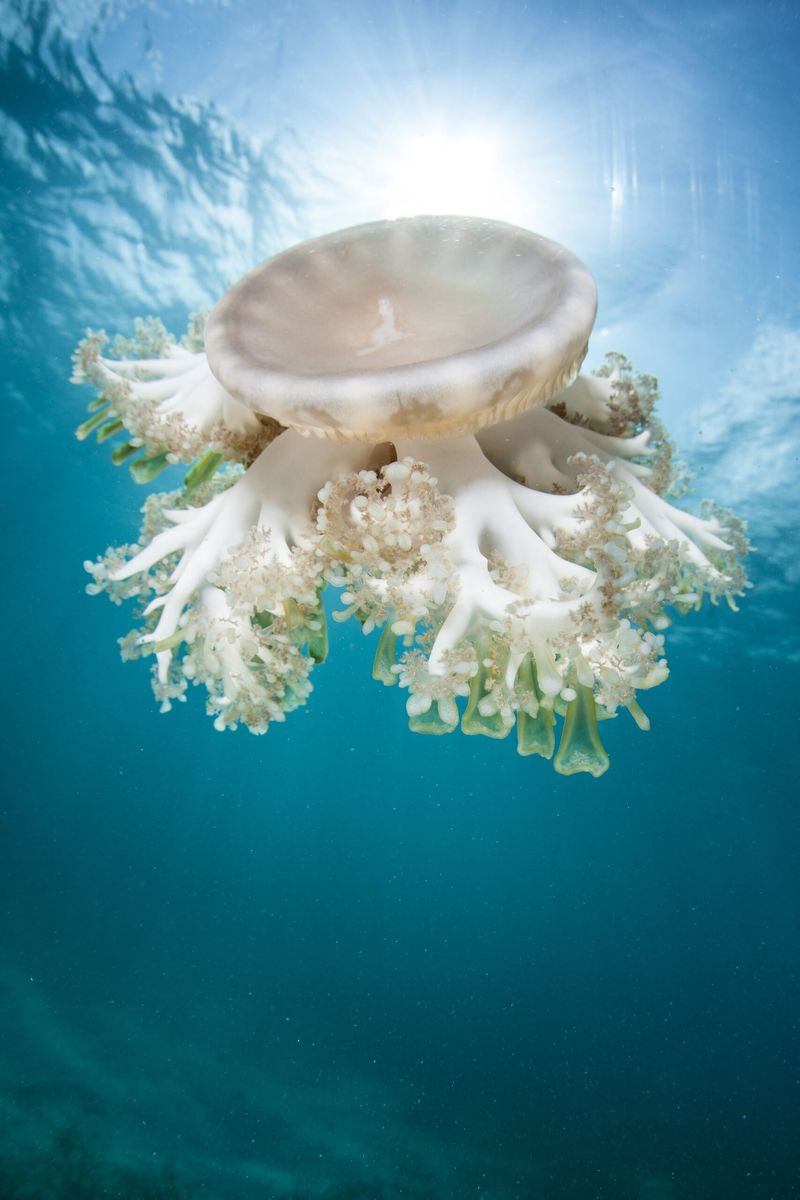
Unlike their free-swimming cousins, these unique jellies spend most of their lives pulsing upside-down on lagoon floors. Their bell resembles a blooming flower with arms extending upward toward sunlight.
Inside their tissues live symbiotic algae that photosynthesize like plants. They release mucus “bombs” containing stinging cells that float through water, causing mysterious “stinging water” syndrome that puzzled scientists for years. These living gardens create underwater meadows in tropical shallows worldwide.
14. Flower Hat Jellyfish: The Underwater Firework
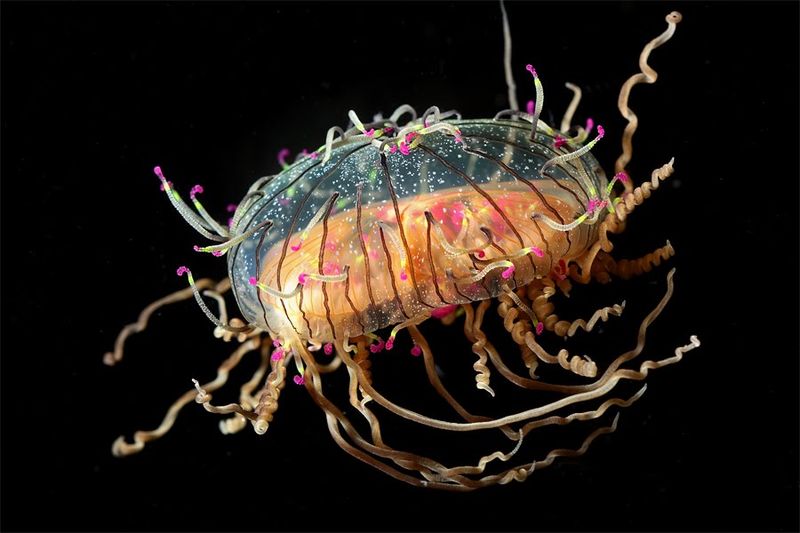
Resembling an elaborate Victorian hat adorned with colorful ribbons, this fashion-forward jelly sports distinctive multicolored tentacles arranged in bands around its bell. Native to Japanese and Brazilian waters, it’s now invading Mediterranean coastlines.
Despite its festive appearance, its sting packs a painful punch. What makes it truly special is its unusual swimming style—unlike most jellies that pulse, the Flower Hat rows with its tentacles, moving with surprising speed and precision toward prey.
15. Cauliflower Jellyfish: The Ocean’s Buffet
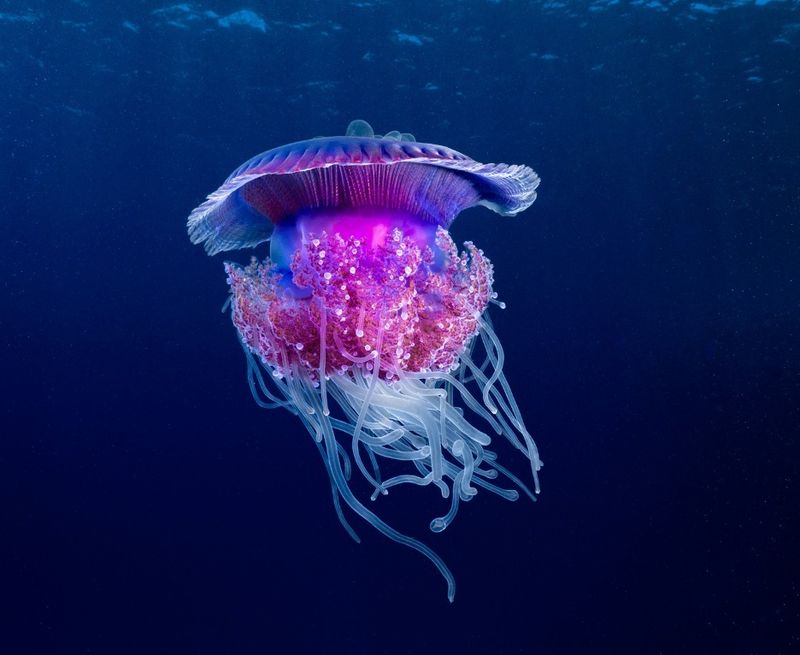
With a lumpy, warty appearance resembling its vegetable namesake, this gentle giant serves as a floating ecosystem. Dozens of fish species shelter among its tentacles, gaining protection from predators.
Humans in Southeast Asia harvest and eat these jellies by the thousands—over 500,000 tons annually! After processing to remove toxins, they become crunchy, tasteless vehicles for sauces in Chinese banquet dishes. Despite their intimidating size (up to 2 feet across), their sting is barely perceptible to humans.


